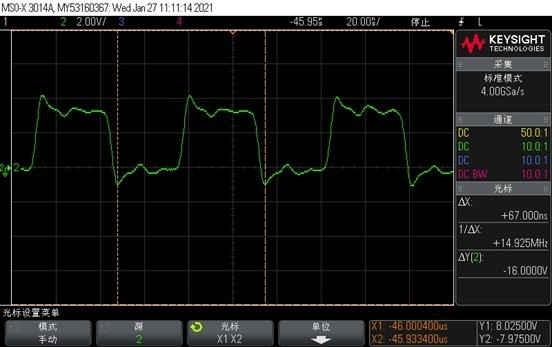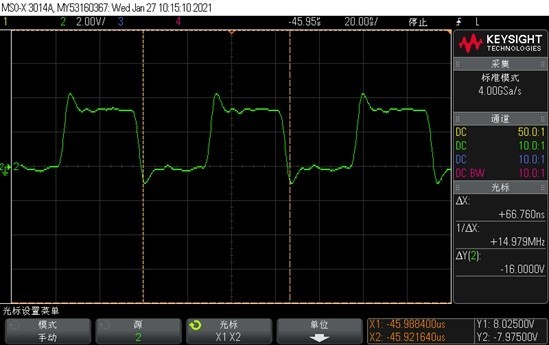Other Parts Discussed in Thread: ISO7641FM
Hi,
my customer is using ISO7741 as SPI isolator,
with the batch whose silk screen shows 01AQ9ST, the SPI communication is correct at both 10MHz clock and 15MHz clock.
with the batch whose silk screen shows 9AATTET, the SPI communication is correct at 10MHz, but failed at 15MHz.
The schematic is as below: the left side is C2000 MCU, the right side is ARM.
We test by sending number from -20000 to 10000 from right to left, incrementing 1 per data, and then print out the received data.
We will find the received data will be wrong(random value) only at 15MHz and with 9AATTET batch ISO7741. We test on the same board and this phenomenon goes with this device.
We've checked the voltage rail and it's stable.
We are not able to locate which pin is wrong.
We've measured both input and output of ISO7741, there is no pulse missing, and input to output delay is within 10ns for both good device and bad device.
So our suggestion is to ship the bad device to BU to do the analysis.
If you have any other suggestion, please let me know.




